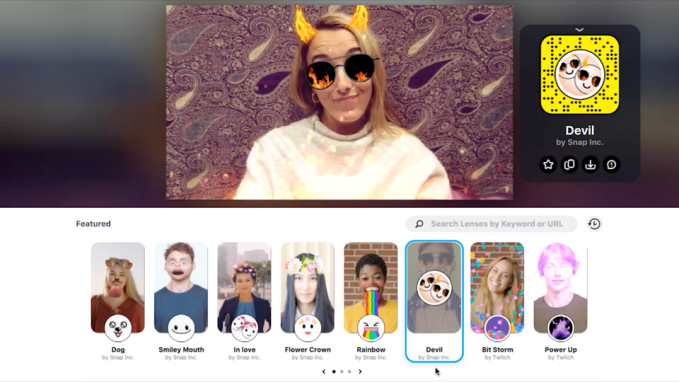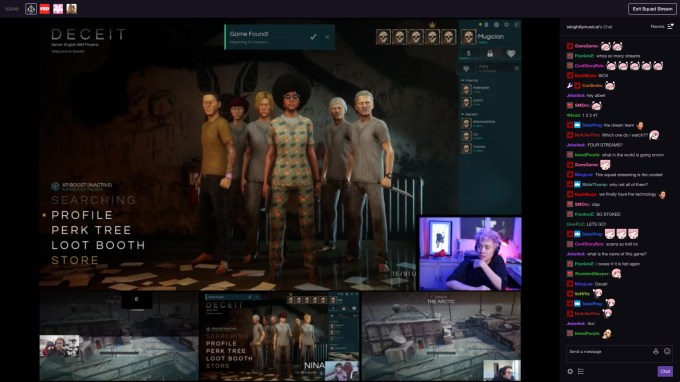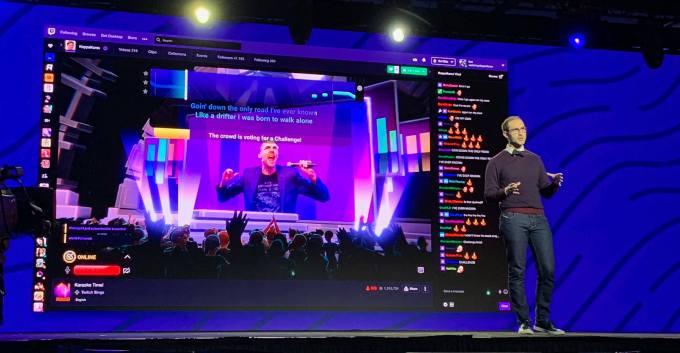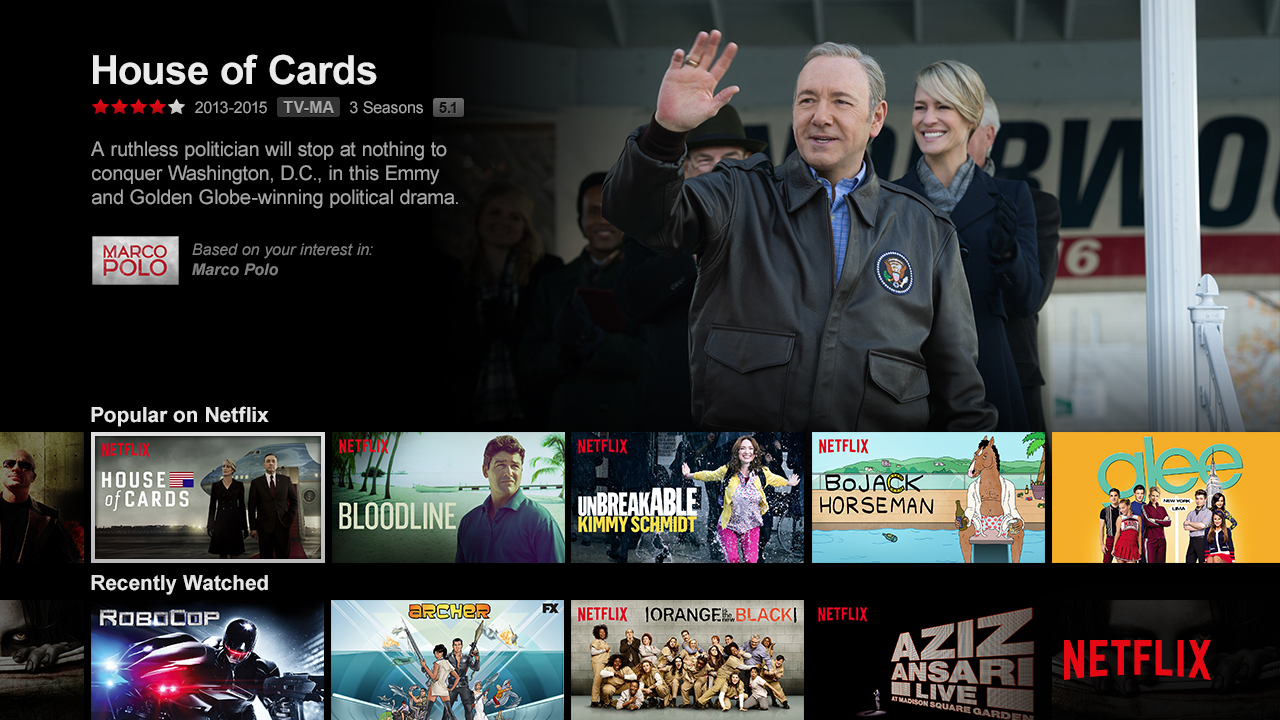From humble beginnings as a simple Facebook group I posted in September 2015, Techfugees has come a long way. It was conceived as a vehicle to enthuse technologists about the plight of refugees by waking them up to the idea that their innovation, startup mentality and design-led thinking could potentially bring new, scalable new solutions to the plight of displaced people. Today, Techfugees is an international non-profit with its own CEO, Joséphine Goube and a team based between London and Paris. Not bad for a handful of posts on social media…
What’s fascinating about the project as it’s developed is that, at the time, it was considered quite radical, perhaps even odd, to bring tech people into the equation. But simply watching the footage of refugees clutching smartphones as they fled war-torn regions and natural disasters made the tech world realize it can be part of the solution to many of the seemingly intractable problems refugees face.
Techfugees has grown into a community of around 18,000 innovators all over the world, supporting by way of their own projects or companies, via social media and taking part in hundreds of dedicated events around the world. This includes more than 30 hackathons and an annual Global Summit, the second of which happened over the last two days in Paris. The Summit had over 500 participants, such as social entrepreneurs, engineers, designers, humanitarians, policymakers, researchers or impact investors, a large number of whom who have a refugee background. Speakers discussed and debate the different uses of technology for displaced people during the time of migration until arrival to their new host societies.
The impact of climate change will cause the migration of 143 million people by 2050
This year’s program looked at four main topics: Access to Rights and Information; Data Ethics; Social Inclusion; and Climate Migration. The last issue is now of even greater urgency in 2018. According to a study by the World Bank published earlier this year, the impact of climate change will cause the migration of 143 million people by 2050, bringing with it looming humanitarian challenges.
Just like at your typical tech startup conference, Techfugees has a similar programme: The Techfugees Global Challenges Competition. This showcases projects responding to the needs of displaced populations and building technological products or services for them, based on Techfugees’ 8 guiding principles and addressing one of Techfugees’ five focus area: access to rights and information, health, education, employment and social inclusion. The applications went through an international Jury of experts who selected the 25 finalists from hundreds of applications, from 52 countries across the world, which pitched their project in front of an international Jury and Summit attendees.
The 5 winners (described in their own words) were:

Integreat (Germany)
“Integreat is an information app and website tailored to the specific needs of both newcomers as the users of the app and municipal administrations as the content providers. It’s a mobile guide for newcomers. Multilingual. Offline. Free. Can we provide the people arriving in our city with all relevant information in their native language as quickly as possible? Even without internet access and without confusing red tape? The result is an app called Integreat which passes on all relevant information in multiple languages to the newcomers. It is a holistic service ecosystem for cities, districts and organizations for the integration of people with a flight or migration background.”

Shifra
Australia / USA
“Shifra is not only a life-saving mHealth intervention, it is also a research project which aims to explore the social, cultural and geographic barriers to quality healthcare access many refugees experience, as cited by the refugees themselves. The Shifra web app is designed to improve access to quality sexual and reproductive health care. It provides local, evidence-based health information in multiple languages for communities with varying levels of language and health literacy. Shifra also directs users to trusted clinics where they can access respectful and safe care. We work with local health networks to improve their existing services based on the self-identified health needs found in Shifra’s anonymous user trend data.”

Antura and the Letters
(Syria, Lebanon, Jordan, Turkey, Iraq and Egypt)
“Antura and the Letters is an engaging mobile game that helps Syrian children learn how to read in Arabic and improve their psychosocial well-being. Considering that most refugees have old smartphones and connectivity is always a challenge for them, the game runs on old devices (from 2010/2011), it’s very small to download (less than 80Mb on Android) and it does not require internet connection. Antura and the Letters is completely free and open source… and it has been designed in order to be easily adaptable to other languages! That’s exactly what we want to do next with the goal to reach and help as many children as possible around the world.”

TaQadam
(Lebanon)
“In the era of machine learning and artificial intelligence, the data workers and annotators are the new programmers. From robots, drones, self-driving cars or e-commerce, the markets need for vision technology for artificial intelligence is extraordinary. One of the major building blocks of such AI-powered recognition systems is image annotation delivered with a human input – data training. Today’s data is driving tomorrow’s AI products. To be competitive in AI, innovation depends on having data-edge often more than a technology-edge, but 80% of data engineers’ time is spent on sourcing and preparing quality image data for AI models. TaQadam optimizes image annotation for data-driven companies with visual AI and delivers on-demand, vertical-specific, high-quality image annotation. With an API and a cloud architecture, we ensure a simple and secure way to build image data set with a high accuracy and precision, while simplifying the process of sourcing human insights from dedicated and trained teams of TaQadam. TaQadam is a unique service on the market that brings a specialized on use case teams that are building AI together with the client. With gamification and mobile accessible work on TaQadam Android App, we transform the experience of annotation to fit the younger generations. We create work of the future: accessible, flexible, allowing fluidity, community building and fun.”

Refugees Are
(Worldwide)
“Refugees Are map the public opinion around refugees in the news by:
1- Extracting daily news related to refugees from GDELT (open source news dataset)
2- Extracting location from the article
3- Applying sentiment analysis to classify it as positive, negative or neutral article
4- Extracting topics related to refugees using LSA (Latent Semantic Analysis)
5- Extracting most common words occurring with refugees
6- Visualizing it in an easy way for the public to understand
7- Let the public help identify negative news around refugees”

And finally The Mohajer App won a special jury prize for its outstanding work assisting Afghan refugees in Iran in incredibly difficult circumstances:
The Mohajer App
Android / IOS
Iran, US, Canada and UK
“The Mohajer App was created with the support of Afghan communities inside Iran to address their needs. The app was completed with a group of paid and voluntary refugee-rights attorneys, advocates and technologists. Mohajer has two features: – The “Get Informed” section provides information for users concerning Iran’s immigration policy, the rights of Afghans in Iran, and resources that are available for concerns such as health, education, combatting from discrimination and more; the list continues to expand as users share their needs. The section also provides a list of support groups that our team has verified directly. The “Submit Report” feature enables users to share their everyday experiences as Afghans in Iran and support the larger community in addressing challenges by sharing information on events and experiences. The information on the app is also accessible offline, so as to support those without regular internet access.”
Here’s a run down of the rest of the 25 that pitched, in their own words:
Challenge #1 – Access to rights & information
TikkTalk (Norway)
“Tikk Talk is an open marketplace for interpretation services for everyone who is in need for interpretation assistance. So far the platform handles 80% of all assignments automatically, limiting the overhead costs which traditional agencies have. The platform also gives all parties full transparency which empowers them to make better decisions. Because of the tech, interpreters are in the forefront deciding on their wage and which assignments they would like to take. Before, Helse Førde (Hospital partner) switched to TikkTalk they only received 24% qualified interpreters now they receive 99% qualified interpreters.”
Refugee Info Bus
(United Kingdom, France, Greece)
“Refugee Info Bus’s mission is simple. Operating at the frontlines of Europe’s ongoing refugee crisis, we provide good quality multilingual legal information and free Wifi to refugees on the move in, or having just arrived, in Northern France and in Greece. Our first Refugee Info Bus began life as an old horsebox, purchased, stripped-out, cleaned-up, and converted into a mobile office and Wi-Fi hotspot for refugees and asylum seekers living in northern France. Within a year, we facilitated over 91,000 Wi-Fi logins and delivered more than 1,000 workshops to 50,000+ individuals on the UK and French asylum systems.”
Refugee.Info
(Greece, Bulgaria, Hungary, Serbia
“In mid-2016, Refugee.Info pivoted to focus on social media to better serve the needs and preferences of users, which had drastically changed after borders closed in Europe in March of that year. Refugee.info hired local journalists to obtain and verify news and other up-to-date information about the context, as well as content professionals to optimize the information for social media, applying private sector content marketing principles to increase ROI. Now, refugees in Greece, Italy and the Balkans can message the page and receive a quick answer from a moderator who will work with the journalists and lawyers to provide accurate information, often sourced from their website or blog.”
Challenge #2 – Health
Connect 2 Drs
Mexico
The platform of Connect2Drs was initially built to strive the private sector as a target market, and it still is. However, with the injustice and lack of a good health insurance for mexicans – deported or refugees – people with disabilities and people who need medical attention at home with palliatives became their main goal.
Doctor-X
Jordan
“Doctor-X is a multi-language medical history mobile application and website with, for each refugee, a private account that the doctor can update when he does an operation on the refugee, in the language the doctor speaks. The program will make it available in 5 languages in case the refugee goes to a new country and needs medical help.”
Iryo
Jordan
“Until now, medical workers in camps used Excel spreadsheets to make notes about patients. On top of that, medical workforce turnover is high, bringing additional confusion and inconsistency to Excel records. Iryo enables accurate medical history recording. Because data storage is decentralized with a copy on a local server, a second one on the patients mobile phone and a third one in the Iryo cloud, even if a patient arrives at a new refugee camp where the Iryo system is already in place, the doctor there will be able to access the patient’s record.”
MedShr
UK/Worldwide
“MedShr has been developed to enable doctors and healthcare professionals to share and discuss clinical cases for peer-to-peer learning and medical education. It is a private, professional, verified network for clinical case discussion between medical professionals. No patient information is visible, all cases are anonymous and members can use the mobile app to get consent from patients to share images. Beyond that, all images and media are securely cloud stored with no images stored on the user’s device. Importantly, MedShr members are also able determine who can see and discuss their cases.”
Challenge #3 – Education
edSeed
(United States, Gaza, Lebanon)
“Edseed is about narrating stories of youth and bringing them closer to donors in the USA; participating in networking; and building a network for higher education of refugees to address policy issues, mentor students.”
Paper Airplanes
(United States / Turkey, Lebanon, Jordan, KSA, Egypt, Iraq, Palestine)
“Paper Airplanes (PA) is a nonprofit that uses video conferencing technology to provide free, peer-to-peer language and professional skills instruction to young adults and teens affected by conflict in the Middle East and North Africa. PA works to support these individuals to pursue their educational and employment goals and ultimately rebuild their lives. PA teaches English and Turkish to youth and adults, journalism to citizen journalists, and beginners’ coding skills to women. By using virtual communication technology to provide live instruction, PA is able to reach internally displaced and refugee youth as well as underserved populations who may be otherwise difficult to reach, including those inside Syria (approximately 50% of our students), young women and girls, and individuals in rural areas across the MENA region. Additionally, PA supplies computer tablets for select Youth Exchange Program participant recipients and scholarships to defray the cost of the IELTS and TOEFL exams for qualified PA graduates.”
Power.Coders
(Switzerland)
“Powercoders’ solution is to offer intensive computer programming classes to refugees over a three month period and then place them in an IT internship. As a result of the comprehensive training and subsequent placement, within a little less than a year our refugee graduates are exponentially better positioned to find and keep an IT job in Switzerland, and many do just that. The program is fully customized to address the challenges and issues that refugees may face when trying to integrate professionally and the courses enjoy an almost 100% internship placement success rate and subsequent 80% integration rate.”
RefgueeEd.Hub
(Greece)
RefugeeEd.Hub is an open source online database that promotes promising practice in refugee education globally. RefugeeEd.Hub aims to raise the quality of education for refugees and displaced people by generating knowledge and fostering collaboration among global and local stakeholders working to provide education to refugees. RefugeeEd.Hub will support education innovators, multilateral institutions, global development actors, education funders and government and policymakers to inform practice on the ground.
Challenge #4 – Employment
Bitae Technologies
(United States, Jordan)
“Bitae Technologies aims to help global, mobile talent, like refugees and migrants, carry their skills and experience with them in a secure, verified digital CV, addressing the lack of access to formal education and employment faced by refugees and other vulnerable populations. Bitae transforms non-formal learning and achievements into opportunities for refugees. We provide a platform to track, store and verify refugees’ non-formal learning and skills, creating a “digital backpack” of classes, workshops, internships and skills that together, can help a refugee move forward with education and employment. Bitae leverages mobile and blockchain technology to ensure that governments, international organizations, NGOs, educational institutions and employers are able to document non-formal learning and skills in the most inclusive, secure and transparent way. The Digital Backpack focuses on four key functions: creating badges and verifying skills, requesting and sending references, skills matching and skills assessment. Using existing tools, the platform makes it possible to create blockchain-backed credential badges that can be stored and shared.”
Human in the loop
Bulgaria – 2017
“Human in the Loop is a social enterprise which employs and trains refugees to provide image annotation services to computer vision companies. It is a niche market that currently requires manual human input in order to train ML models to recognize images in a way that a human would, and Human in the Loop is part of a growing community of “impact sourcing” enterprises that is dedicated to providing employment to vulnerable groups in this sector. The opportunity they are seizing is that image annotation is a very accessible type of labor that does not require previous education or professional skills, but which can open the door to more advanced tech jobs and freelancing skills, which are especially useful for migrants. In this way, they are empowering refugees to earn a living in a dignified way and gain skills, and they are turning them in “digital nomads” who are able to make use of the opportunities that remote digital work provides to people who are on the move. Human in the Loop works as an outsourcing business with B2B sales. Their clients are companies from the computer vision, self-driving cars, drones, and satellite imager industry, which are training machine learning models.”
Rafiqi
(United Kingdom, Germany, Jordan)
“Rafiqi is a matching tool that leverages artificial intelligence to connect refugees in real-time and in a customized way to the opportunities that are the most suitable to his/her profile and that would lead to lifelong employment. Currently, there is no single platform where resettled refugees can access and filter the wide range of opportunities available to them, including jobs, trainings, mentorships and degrees, and where any organization (company/NGO/university) can seamlessly access and filter refugee talent. Refugees lack of knowledge of opportunities and of the right opportunities is resulting in them being unemployed or being overqualified for what they are actually doing. Despite the existence of some refugee to jobs matching programs supported by governments and NGOs in countries like Germany and the Netherlands, these matchings remain largely manual and limited in terms of intelligence. These matching efforts cannot scale well given the high number of refugees and the diversity of their profiles, as well as the diversity of opportunities available to them.”
Transformify Rebuild Lives Program
(Worldwide / EU, Iraq)
“The Rebuild Lives Program by Transformify exists to provide access to jobs and secure payment to displaced people as well as access to targeted eLearning to improve their skills by using recruitment CRM leveraging HR-tech, fintech and AI to connect refugees with employers and provide access to secure payment even if the refugees have no permanent address or a bank account.”
Challenge #5 – Social inclusion
PLACE
(France, Germany, United Kingdom)
“PLACE runs Innovation Labs for migrants and refugees in Europe. These labs transform the people from migrants and refugees into Innovators – creators of solutions for European societies. The labs are 1 to 3-day immersive experiences that apply design thinking methodology to enable Innovators to identify problems, understand their users, develop solutions and then rapidly test and prototype these solutions with a diverse community of local stakeholders. Beyond the Labs, the Innovators have the opportunity to develop their projects through the network of the PLACE collective – actors in the private, public and civil society that see the value of diversity in migrant-led innovation and who want to be a part of it. In addition to innovative solutions, the labs also produce a new leadership model for Europe. Innovators who demonstrate motivation and willingness to take on a role as a leader in migrant-led innovation are trained to be PLACE Catalysts. The Catalysts are trained in interculturality, sourcing, public speaking, networking and lab facilitation. They are then given the opportunity to apply these learnings as facilitators in Labs throughout Europe.”
Register of Pledges
(Ireland)
“The Register of Pledges project workstream are: Humanitarian Database of Pledges (Accommodation, Goods and Services) administered by Red Cross with back-office capabilities for pledge management and workflow and reporting capabilities; Open-source version of the technology is available on Github, a humanitarian data capture system with APIs and a translation interface; Evolve and open-source our Case Management System, to optimize Service User outcomes.”
SchoolX
(UK/Turkey)
“SchoolX envision a shared economy model with volunteer teachers which include university students, educated refugees, retired teachers and other local volunteers, who will teach refugee students. Due to the challenge of limited access to education that these displaced people face, our solution is to recruit teachers within the refugee community and local community, and connect them with refugee students who are eager to learn. The talents of these teachers are then harnessed to deliver rigorous and certified education to the students. Through this, volunteers, including refugee teachers, will also receive an allowance for their efforts as well. The solution, in a form of an online platform, will provide training packages that involve not only fundamental tenets of teaching, but also pedagogical and psycho-social training for the volunteers to prepare them to approach refugee children in the most appropriate and empowering manner, The online platform will also serve as a database which will be utilized to match teachers and students based on their needs, skills, availability, and geographical proximity in order to arrange flexible, face-to-face lessons.”
SPEAK
(Portugal, Spain, Italy, Germany)
SPEAK is a crowdsourced language and culture exchange network, based on an Online2Offline model. All processes are managed online, through a platform developed in-house, while the learning and sharing experience happens offline, allowing participants to establish a close relationship with one another. This model ensures a greater efficiency and minimization of fixed costs, allowing SPEAK to be sustainable at scale while charging only a symbolic fee for its program. SPEAK empowers its participants by expanding their language and cultural skills, all the while becoming part of mutual support networks. Through a language and culture exchange, SPEAK connects migrants, refugees and locals living in the same city. In creating bridges between migrants and locals, members often help each other with job offers or renting their first house in a new city thanks to the power of SPEAK communities. These networks are home to a multicultural community, based on equality and where cultural heritage is validated. In other words, SPEAK’s networks nurture unity in diversity.
SPEAK’s volunteer Buddy system empowers anyone with the willingness to share their language and culture, allowing for an “everyone a changemaker” attitude, which encourages an even greater participation in local public life. he sustainability of the initiative relies on the community and willingness to promote SPEAK’s values of an integrated and inclusive society.”
Source: Tech Crunch




 .new
.new 











